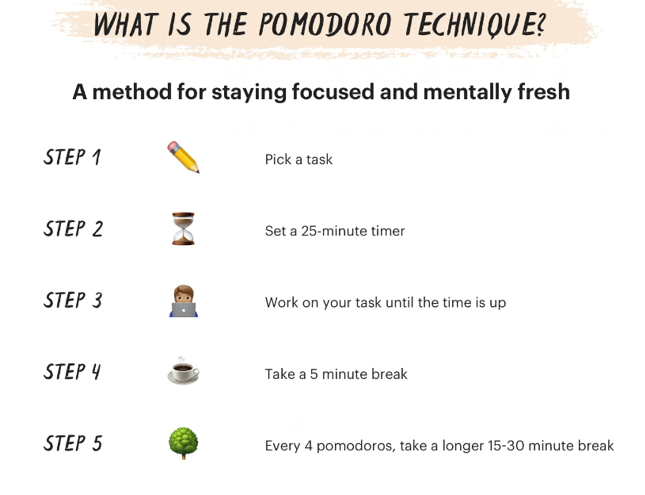Manage Your Time Effectively Starting Now!
- Bridget Carr
- Feb 5, 2023
- 6 min read
Recently, I was researching how to manage my time better. If your anything like me, you have probably realized that there’s not enough hours in the day to accomplish everything on your checklist. Through my research I have learned that there’s a whole subset of blogs that teach you how to manage your time wisely and accomplish tasks throughout the day.
I thought I would share all of my tips and tricks with you. This post is focused on the best time management strategies and tips that will help you optimize how you schedule your time. To get better at managing time, one must be consistent.
We all have the same amount of time each day. It’s up to us to organize ourselves and make the most of our time. Effective time management gives you back control of your day. These strategies will help you to reduce distractions and pinpoint your focus. Let’s understand what time management is.
What is Time Management?
Time management is the coordination of tasks and activities to maximize effectiveness. The purpose is to get more done in a shorter time period. Certain elements of time management include planning, scheduling, and organization.

Why You Should Learn Time Management
Feel like you have more time in your day. When you know where your time is spent in your day you may find that you reduce unnecessary tasks, deprioritize tasks that do not need to be done today, and accomplish things in less time.
Establish a balance between work and personal time. Prioritize your work that needs to get done today and clarify what work can be pushed to a later date. Having periods of time where you can sit, and focus will make you more productive knowing that afterwards you can spend time with your family/friends.
Reduce stress. Without effective time management it can feel like you never have any time for yourself and activities you like to do. You may feel burnt out. Effective time management will make you feel like you have more time in the day, therefore leading to less stress.
Break bad habits. Overtime procrastination can add up and lead to bad habits. Bad habits pile up and can impact the quality of your work. (Trust me, I’ve been there.) These strategies can help you identify and break bad habits.
6 Time Management Methods to Increase Productivity
In order to build your time management skills, it is important to use a tried- and-true time management strategies into your daily routine. These strategies will help you set time limits on work, knock off one task at a time, and schedule your day with more of a plan.
1. Timeboxing
Timeboxing is a time management technique that limits a task to a foxed timeline that could be minutes, hours, days, or even weeks long, depending on the task complexity. Think about a time when you have delt with stress of an impossible deadline. Do you remember the anxiety of the focus you had to have in order to get everything done. Timeboxing uses the psychological phenomenon to the advantage of its adopter. The way this process works is that you complete work within “timeboxes.” Use this strategy if you aren’t sure how much time spending on each task and want to approach your to-do list more intentionally. Timeboxing helps you to break down broad tasks into smaller pieces and complete those pieces in a reasonable amount of time. Each task should have its own timebox that lasts no more than three hours. For example, if you need to write an essay, you might create a two-hour timebox to write an outline. Take a break, then create another three-hour timebox to begin the first draft. Breaking the work into smaller pieces allows you to make steady progress towards your goals over the course of days, weeks, or months.
“Most people overestimate what they can get done in a year and underestimate what they can do in a decade.”-Bill Gates
2. Time Blocking.
Time blocking is comparable to timeboxing. Instead of scheduling specific time for each individual task, you will practice blocking off set periods of time on your calendar for related work. Time blocking will help you to dedicate more time to flow and deep work by allowing you to focus without interruptions. Using this method, you are effectively breaking down the work into discrete time slots.
In order to create a time block, start by figuring out your daily priorities. Look at your schedule for the whole week and write down what you have to do. Group similar tasks so you can work on them in one block. Then, practice scheduling blocks of focus time on your calendar to help you stick to your time blocked schedule.
3. Pomodoro Method
The Pomodoro method helps you tackle work within short time frames, and the take breaks between working sessions. This method actively encourages breaks which are great for intrinsic motivation and good for your brain. Research suggests that taking breaks makes people more creative.

4. Get Things Done (GTD)
This method was invented by David Allen in the early 2,000’s. The first step of this method requires you to write down everything you need to do. By freeing up brain power and instead of relying on task management tools, you can focus on taking action, and not remembering what you need to do.
Once you have written down everything you need to do, make sure you sort and prioritize your work. You may have work that no longer need to do and that can go in the “trash”, work you want to do right now that goes into a “later” folder, work that is dependent on tasks and so on. The tool should capture all the details, it’s your job to take action on them.

5. Eat the Frog
Eat the Frog time management strategy promotes you to tackle your biggest or your most complex tasks first before working on your less important work first. You should use this method because it helps you to split your days between regular, daily work and high priority tasks. I like this method because it ensures you’re getting to your most important work every day. In order to start this method, make sure that you are tracking you’re work and priorities in a centralized tool. Once you have eaten the frog you can move on to the rest of your tasks.
6. Pareto Principal
If eating the frog method does not sound like it works for you, you may prefer the Pareto time management strategy. This time management principal is the opposite of eat the frog method. This strategy encourages you to get your easiest and quickest tasks out of the way so you can feel more accomplished and motivated as you head into your day.
5-Time Management Tips to Get More Done
1. Plan ahead
Make sure you plan ahead at the end of each day. Sometimes days often feel like you’re scrambling around because were often behind by the time we get our mornings started. If you go through your emails each morning trying to figure out how to start your day, you’re not alone, many people do this. However, there’s a better way. Instead of trying to rush and figure out what your priorities will be that day, spend at least five minutes each night preparing for the next day. This increases your drive because you know exactly what you are doing every day before you even log on to your computer. This also makes sure you’re getting you’re most pertinent work done every day.
2. Learn how to say “No” or delegate tasks.
Clarifying your priorities allows you to gain an understanding of what’s less of a priority as well. It is not always easy to say “no” but it helps when you can explain why you’re saying “no” because it may not align with your current priorities. For example, if you have a lot of homework to catch up on and your friends want to take you for a night out, the wise thing to do in this situation would be to get your work done. If you are working and you can delegate tasks to other team members because it aligns better with someone else’s expertise than do that. You are ensuring the work is done by the best person for the job. Make sure you manage your workload. Don’t agree to more work unless you can comfortably allocate time to do it.
3. Organize your space.
Think back to when you first set your office space up. I’m sure it was exciting to pick out a desk that suited your needs and had an ample amount of storage. I bet your desk does not look the same as when you first set it up. Over time you have probably accumulated papers, books, pens, and stray items. A messy desk may not seem like a big deal, but physical clutter influences mental clutter. Take time out of your day, even if it’s just five minutes, to organize your desk space. You may find it easier to focus.
4. Keep an activities journal.
Write out everything you do each day, and the time you do your activities each day. Identify the times of day you are most productive. Identify the times you are not as productive and use this information to guide scheduling tasks.
5. Set Goals Correctly
Use the SMART method setting goals. Make sure your goals are Specific, Measurable, Attainable, Relevant, and Timely. The SMART method helps push you further gives you a sense of direction, organize and reach your goals.
Sources:
Martins, J. (2022). 18 time management tips to boost productivity [2022] • Asana. Asana. https://asana.com/id/resources/time-management-tips?utm_campaign=NB--NAMER--EN--Catch-All--All-Device--DSA&utm_source=google&utm_medium=pd_cpc_nb&gclid=Cj0KCQjwkOqZBhDNARIs
Lucid Content Team. (2020, September 16). A guide to Timeboxing. Lucidchart. https://www.lucidchart.com/blog/what-is-timeboxing
Scroggs, L. (2022). The Pomodoro technique — Why it works & how to do it. Todoist. https://todoist.com/productivity-methods/pomodoro-technique
Corporate Finance Institute. (2022, April 22). Time management.
Cane, B. (2022). What is eat the frog? A dead simple system for productivity minimalists. Todoist. https://todoist.com/productivity-methods/eat-the-frog

Comments